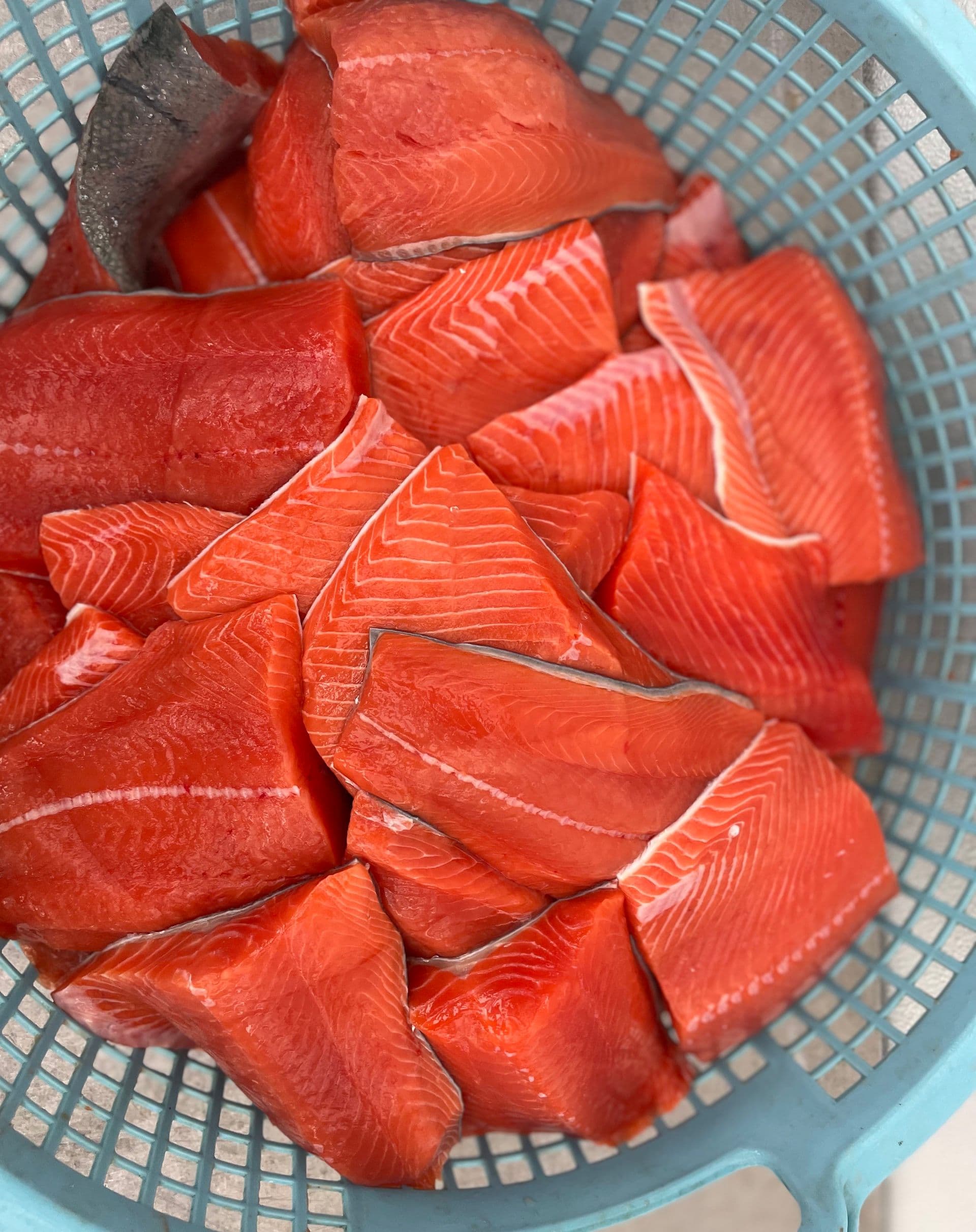Alaska’s sockeye salmon runs are legendary for a reason. No other place on earth has such pristine freshwater ecosystems that can support the millions of sockeye that return to spawn every year. From the largest runs in Bristol Bay to the smaller rivers and lakes of southeast Alaska, we have an incredible bounty of a really delicious fish.
We’ve traveled all over Alaska in search of the best quality sockeye for you, and we thought you might like what we’ve found.
Sitka doesn’t have many sockeye since the steep shores of Baranof Island don’t support larger lakes that sockeye tend to spawn in. Thankfully, in the early days of Sitka Seafood Market, we had fishermen friends in Juneau who harvested sockeye from the Taku River. This smaller sockeye run produced amazing fish that filled our boxes for years. As we grew, we needed to find a bigger supply, so we looked to other areas of Alaska. Because of the lower volume of fish and the high quality of processing, it can be hard to get anyone to part with many of their southeast Alaska sockeye. Only when they have a banner year will they consider selling some of their “pack” — the frozen supply they stockpile to sell through the fall and winter.
Not too far north of the Taku lie two beautiful glacier-fed sockeye rivers — the Chilkat and Chilkoot in the northern Lynn Canal. Their local fish processor, Haines Packing Company, had been expanding their fleet of gillnetters and they were looking for a new market just as we were searching for new supply. For owner Harry Rietze, commodity markets are often risky and of low value, so our market and his fish were a perfect match. Keep an eye out for Haines Packing sockeye in your boxes and check out where it comes from on google maps. We know you’ll be impressed.
Even with Haines Packing on board, we still needed more fish for when their runs were low or for when the Haines fleet was busy targeting the more plentiful keta salmon. For that, we looked west to Bristol Bay, which boasts the world’s largest sockeye runs. In 2022, a record 79 million fish returned to spawn in its pristine rivers and lakes! With so many fish returning, supply isn’t the issue — it’s the volume of fish returning in a short period of time in a remote and difficult place to harvest and process them.
In southeast Alaska, offloading fish is a pretty straightforward operation. Shore-based processors allow boats to pull right up to their piers and drop off their catch. In Bristol Bay’s muddy and sandy shores, there aren’t naturally deep and protected shores, and tidal swings can reach almost 30 feet! This makes transporting fish from a small boat to a shore-based processor challenging, which can result in damaged fish. The sheer number of fish and the challenging logistics of moving them to be processed is the reason why you often get inferior sockeye at the grocery store. Lucky for us we had another option — our friends at Northline Seafoods.

Way back in 2016, when we needed help running and upgrading our fish plant, we partnered with Ben at Northline Seafoods to help us build better freezers and to test if these prototypes would also work for Bristol Bay. We were natural partners because we shared values and a vision of a better experience for fishermen and seafood consumers. After a successful run at our Sitka plant and years of trial and error, Northline Seafood was able to build a floating barge to bring that same quick freezing and quality ideals to Bristol Bay.
Since it’s a floating barge, they can access the fishing fleet much more easily, with reduced time-to-freezer and improved handling along the way. Once they are aboard Northline’s barge-processor, the Hannah, sockeye are frozen super quickly in blast freezers and then stored in a low-temperature holding freezer. This allows them to keep your fish very cold and avoid any temperature fluctuations. Most fish that leave Bristol Bay in a shipping container can shift in temperature from -10°F to 5°F, which damages quality significantly. Northline’s freezer holds at -20°F, which means your fish stays fresh for longer.
These connections that we’ve made over the years have helped us forward our goal of bringing you the best fish we can find. Those of us that want to do it better and feel an obligation to honor and to share great wild seafood find each other. Thanks to those connections and hard working people behind the scenes, we are able to share such quality fish. Thanks for reading and supporting us along the way!




